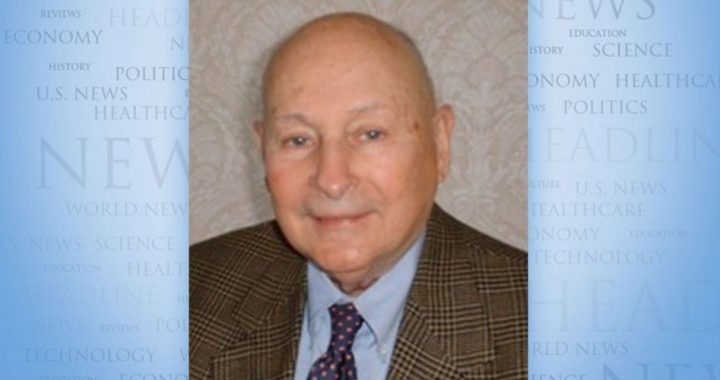
In a previous article I referred to education as the “orphan issue” in this great presidential election. The only serious consideration of the subject at the Republican National Convention was given in a speech by Condoleezza Rice. She had just participated in a Council on Foreign Relations Task Force on education, which produced a very pessimistic view of American K-12 schooling. Its press release stated:
“Educational failure puts the United States’ future economic prosperity, global position, and physical safety at risk,” warns the Task Force, chaired by Joel I. Klein, former head of New York City public schools, and Condoleezza Rice, former U.S. secretary of state. The country “will not be able to keep pace — much less lead — globally unless it moves to fix the problems it has allowed to fester for too long,” argues the Task Force.
The report notes that while the United States invests more in K-12 public education than many other developed countries, its students are ill prepared to compete with their global peers. According to the results of the 2009 Program for International Student Assessment (PISA), an international assessment that measures the performance of 15-year-olds in reading, mathematics, and science every three years, U.S. students rank fourteenth in reading, twenty-fifth in math, and seventeenth in science compared to students in other industrialized countries.
Rice warned that something had to be done to improve the education of our children, or else we would be unable to produce the brains needed to excel as a nation. Diane Ravich, the education writer, told an interviewer on C-Span that only 30 percent of the American people are literate, and it is they who provide America with the brains to maintain our continued economic prominence. But how much more prosperous would we be if 100 percent of Americans were literate?
Of course, every candidate mumbles something about education, but everyone seems to know that American public education is like some sort of huge stone, like the one in Mecca, that is impossible to move. It just sits there inert, unresponsive, brainless. Yet, it absorbs billions of dollars a year and turns out many young Americans who can barely read or write.
I’ve written extensively in books and articles about how our education system has become what it is. But the reason why it is immovable is that it has become the fiefdom of a powerful labor union whose only reason for existing is to exert power over politicians. It has a voracious appetite and is never satisfied with the power and money it now has. It always wants more, and therefore will do anything to increase its cash flow.
And that is why all politicians skirt around it. They know that there is nothing they can do to actually improve education, and they know that the purpose of all federal education programs is simply to increase the cash flow into the coffers of the teachers unions. Since the unions are not really interested in education, they have become a kind of racketeer enterprise eating at the substance of the nation.
Perhaps the only way that conservatives can shake up the system is to get Romney, if and when he is president, to shut down the Education Department and return power and responsibility of education to the local communities. The next step would be to de-unionize public employees. There is no reason why taxpayers should permit teachers to accumulate such vast political power that they become the public’s master instead of its servants. The unionization of teachers has made it impossible for local communities to improve their schools. The unions are national organizations with national agendas, and the local school is beholden to that national agenda.
And what is that national agenda? It was set early in the last century by socialists who called themselves progressives. Their aim was and still is to change America from an individualistic society to a collectivist one, and to finally lead America into a world socialist government. They want to change America from a constitutional Republic to a social democracy. And in order to do that they must deceive the public because that is not what parents want when they send their children to school. They don’t want indoctrination. They want education.
But semantic deception is now the language of the realm. For example, Republican candidates don’t call Barack Obama a socialist. They call him a “big-government liberal.” That’s not much of an attack, since a lot of Republicans have been big-government liberals. At the Democratic Convention former President Bill Clinton argued that the political conflict today is between two philosophical visions: the “We-Are-All-In-This-Together” philosophy, versus the Republican “Go-It-Alone” philosophy. Socialism and collectivism are now the “We-Are-All-In-This-Together” vision; and “Go-It-Alone” is supposedly the Republican philosophy of individualism.
In his acceptance speech, President Obama did say a few words about education. He said he wanted to add 100,000 new teachers in math and science. (That’s 100,000 new union members!) He said education was the gateway to the middle class. But he didn’t say why so many blacks who have spent years in public schools at great expense to the taxpayer are still in the underclass. The government provides them with something called education, but which is really a form of miseducation that no one can do anything about.
But now there does exist an organization called Democrats for Education Reform, organized in 2005 by three rich Manhattanites: Ravenel Boykin Curry IV, Whitney Tilson, and John Petry. The three attended one of George Soros’ cocktail parties where Illinois State Senator Barack Obama was guest of honor. All three men are in the hedge fund business and, according to Steven Brill’s book, Class Warfare, they became “an informal triumvirate of young well-off Democrats interested in education issues.” After the Soros event, Tilson, according to Brill, wrote an e-mail to his list of education reformers in which he said:
A few years ago, I said that Cory Booker would be our first black President. I was wrong — he’ll be our 2nd (only because of his youth). I met the first tonight: Barack Obama, who is running for the Senate in Illinois. He is strikingly similar to Cory — young (42 vs. Cory’s 35), brilliant, eloquent, visionary and able/willing to cut across political lines. For example, most Democrats are afraid to take on the teachers’ unions and support charter schools and school choice, but Obama (like Cory) champions this issue.
According to Brill:
Beginning in 1998, they had all become enthusiastic backers of Cory Booker when Booker had won a Newark City Council race in an upset. Curry had even introduced his brother, Marshall, to Booker, which resulted in Marshall making a highly regarded documentary about Booker’s unsuccessful 2002 Newark mayoral campaign.
Of course, Booker gave a rousing speech at the DNC, which may pave the way for his nomination for president by the Democrats at some future date. (After Hillary gets her chance at the nomination!) Meanwhile, Booker managed to persuade Mark Zuckerberg of Facebook to donate $100 million to help reform Newark’s public schools. I had sent a letter to Booker offering to take the worst class in Newark’s schools and turn it into the best. Several months later I received a very nice thank-you-but-no-thank-you note of appreciation.
After Curry, Petry, and Tilson created Democrats for Education Reform (DFER), they invited Obama to speak at a meeting of reformers at Curry’s apartment. Brill writes:
Obama, standing on a chair and speaking extemporaneously, didn’t mince words. Curry still remembers one punch line: “If someone can tell me where the Democratic Party stands on education reform, please let me know. Because I can’t figure it out. Our party has got to wake up on this!”… Obama had spent part of his talk extolling charter schools and what they demonstrated about how all children could learn if they had good teachers in good schools. Joel Klein was about to hatch a plan that would allow charters to proliferate in a vivid way — inside the same building as conventional public schools — that would provide indelible evidence of this.
But the unions, who were strongly opposed to charter schools, are an important constituent of the Democratic Party and that is why Obama did not use the words “charter schools” in his acceptance speech. Meanwhile, the DFER has grown into an important force behind the Charter School movement. Its statement of purpose reads:
A first-rate system of public education is the cornerstone of a prosperous, free and just society, yet millions of American children today — particularly low-income and children of color — are trapped in persistently failing schools that are part of deeply dysfunctional school systems. These systems, once viewed romantically as avenues of opportunity for all, have become captive to powerful, entrenched interests that too often put the demands of adults before the educational needs of children. This perverse hierarchy of priorities is political, and thus requires a political response….
Democrats for Education Reform aims to return the Democratic Party to its rightful place as a champion of children, first and foremost, in America’s public education systems.
In other words, liberal Democrats are committed to a government-owned- and controlled education system. Republicans, on the other hand, favor educational freedom in the form of private schools and homeschooling. There are moderate Republicans who believe that the public schools can be restored to what they were before the Progressives took them over. But unionization makes that impossible. Also, the public schools have become atheist schools, and the Democrats don’t address the spiritual aspect of education in their quest for reform.
The DFER organized two panel discussions at the DNC consisting of state legislators and union leaders. The first panel discussed ways of improving public education by changing teacher evaluation, tenure, and compensation, measures generally opposed by unions. The more substantive second panel was described by the DFER as follows:
The second panel included the presidents of the two national teachers unions (Dennis Van Roekel of the National Education Association and Randi Weingarten of the American Federation of Teachers), two educational entrepreneurs with strong technology backgrounds (John Katzman from 2tor and Noodle.org, and Joel Rose from New Classrooms Innovation Partners), and Joe Reardon, the mayor of Kansas City, Kansas. They discussed what a post-factory model of public education might look like. There was broad agreement among these diverse panelists that customized learning is the future of public education. They all emphasized the importance of innovation and entrepreneurship, and the economic and moral imperative of more effectively overcoming the achievement gap related to family income.
The fault lines within this second panel, and in the Democratic Party as a whole, appeared when the moderator, Jonathan Schorr from the NewSchools Venture Fund, asked about the role private providers should play in public education. After acknowledging that private, for-profit companies provide buildings, desks, buses, textbooks, computers, pencils and electricity for district schools, both Weingarten and Van Roekel opposed allowing nongovernment employees to teach in public education, arguing that the essence of public education would be undermined if nongovernment personnel received public funds to teach children.
In other words, liberal hedge-fund Democrats are in the forefront of using the charter school movement to create post-factory models of public education, but the unions strongly oppose anything that would upset their traditional control of the public schools. They oppose using nongovernment teachers who can’t be unionized. Can the hedge-fund reformers defeat the unions? Stay tuned.



